One of the most popular places to visit in Wyoming is Yellowstone National Park – the world’s first ever National Park. In fact, Shae’s dad said before the start of our road trip back in 2017 that he wanted to join us when we finally made it to Yellowstone, so we flew him out to Jackson to join us for five days.
Jackson is about 1-1.5 hours from the south entrance of Yellowstone National Park, so we had a little bit of a drive to get up there. It’s a beautiful drive though as it takes you through Grand Teton National Park…
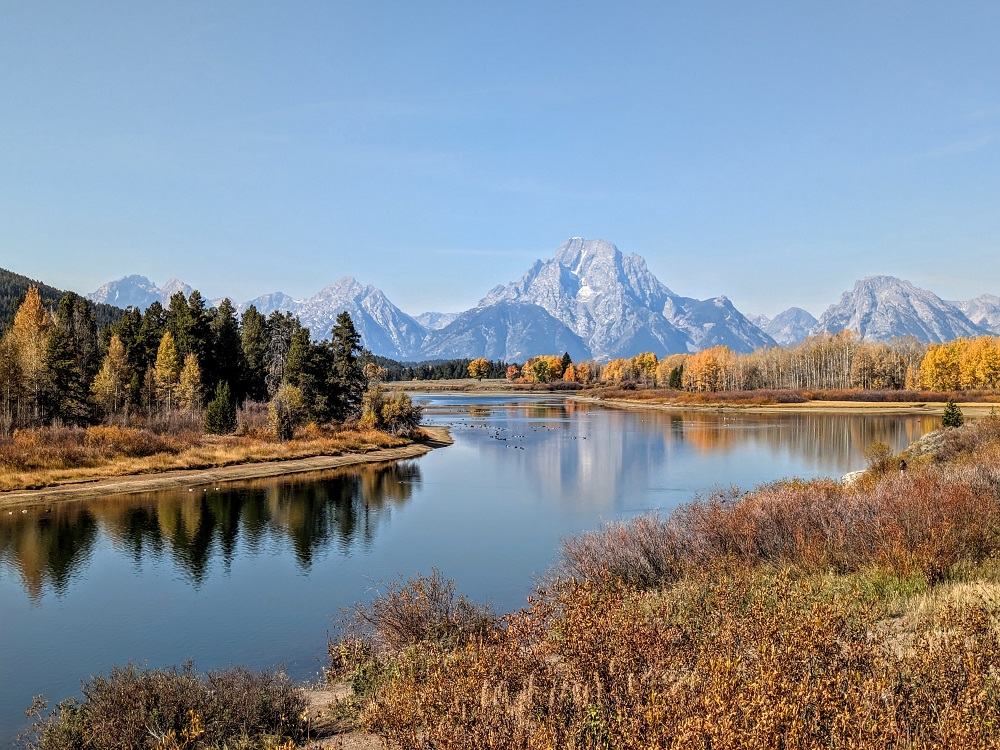
…along Jackson Lake…
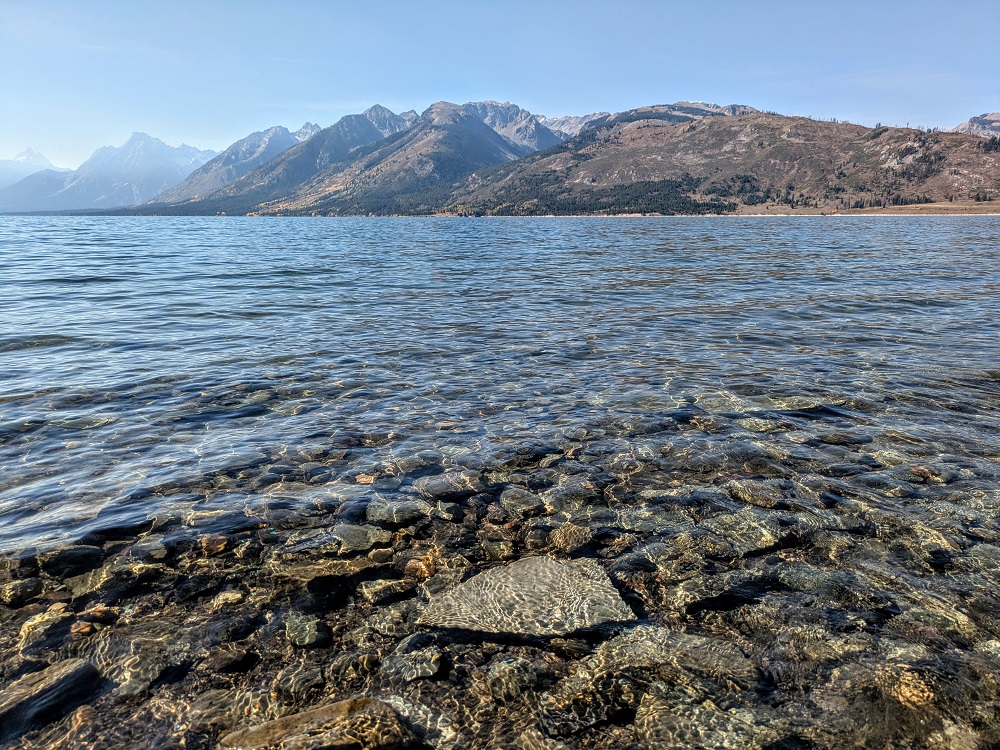
…passing by wildlife (if you’re lucky)…

…until you get to the south entrance. Seeing as Yellowstone is a National Park, there’s a fee to enter, although the cost varies depending on your mode of transport:
- By foot – $20 per person
- Motorcycle – $30
- Snowmobile – $30
- Private vehicle – $35
If you have a National Park Service annual pass which costs $80 per year (or $20 per year for seniors), that covers the entrance fee for all the people in your private vehicle. We had one of those passes already and so didn’t have to pay a separate entrance fee.
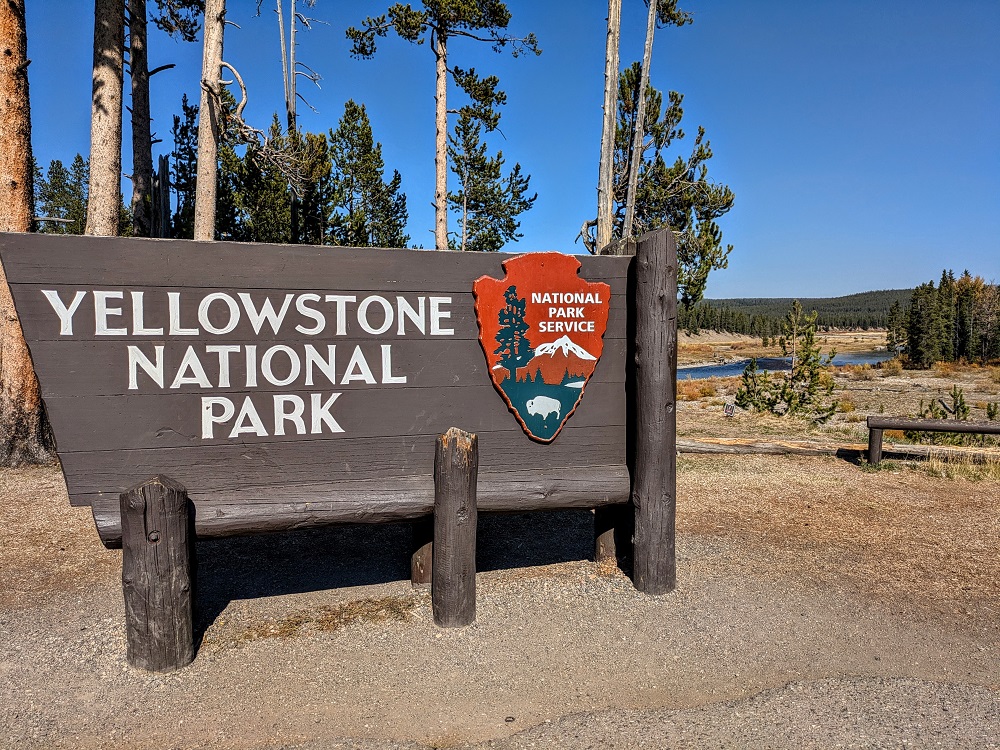
Yellowstone National Park covers almost 3,500 square miles, so it’s a massive place to explore. We knew that we wouldn’t be able to hit up everything during our visit, so we focused on a few key locations and figured we’d stop at other overlooks and sites along the way.
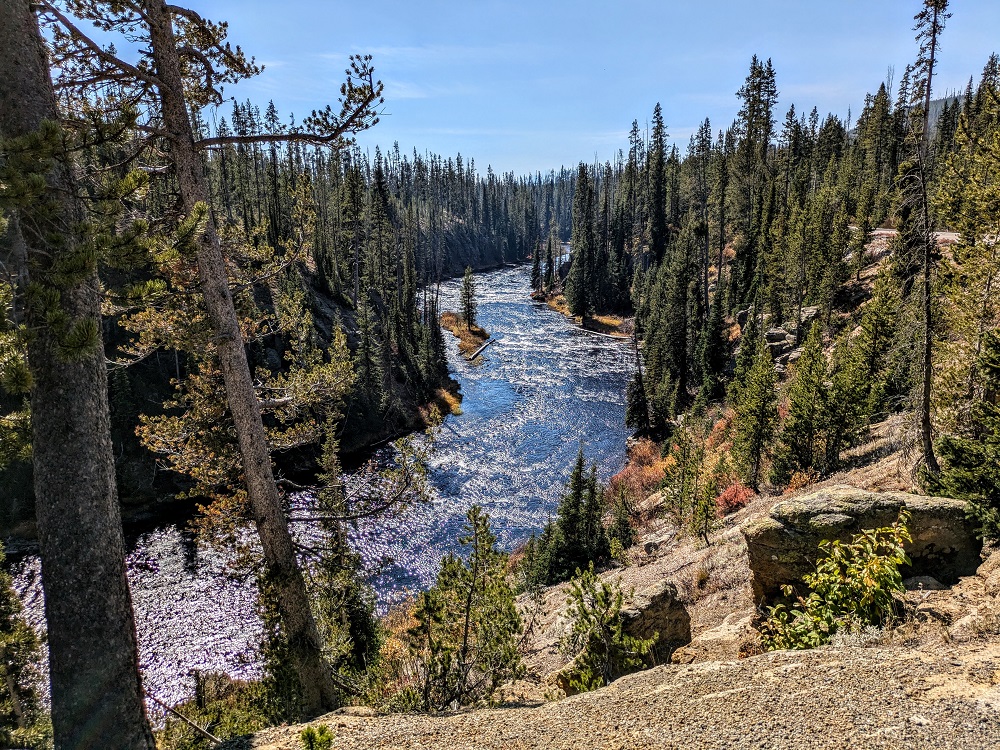
Some of those stops included the Lewis River (above) and Kepler Cascades (below).
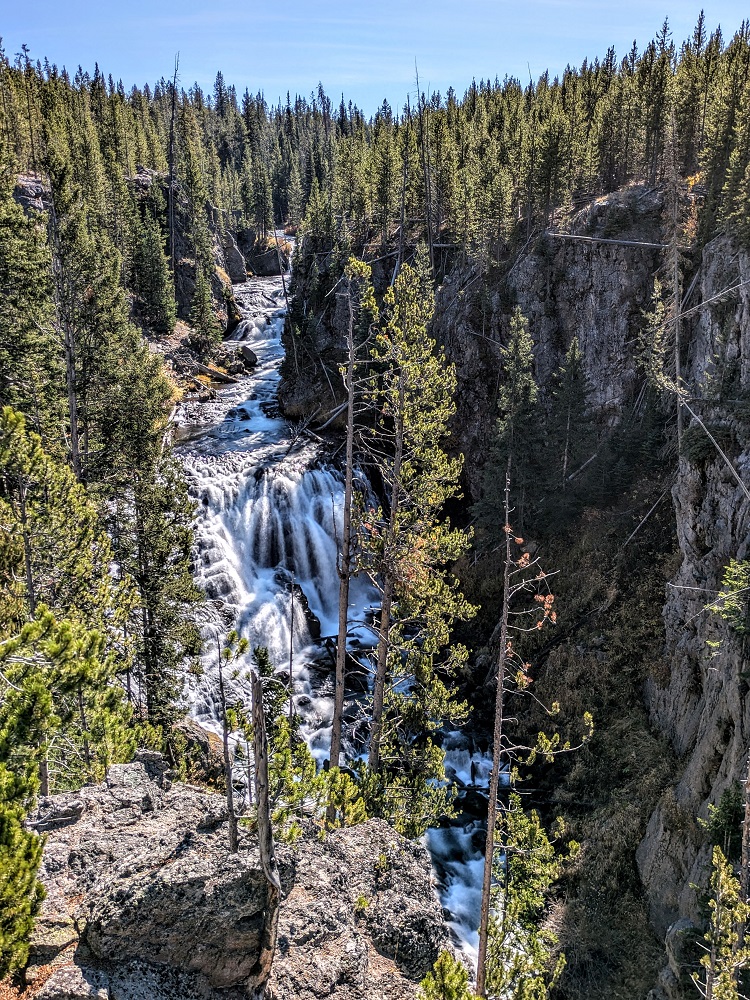
Those water features were along the route to one of the key water features of Yellowstone – Old Faithful. Old Faithful isn’t the only geyser in Yellowstone, but it is one of the most reliable (hence its name). The Old Faithful Visitor and Education Center had a board listing when the next eruptions of the different geysers were due to take place, along with the margin for error. We got to the site at 1:40pm which meant it would be anything from 33-53 minutes before it next erupted. That gave us time to have a quick picnic lunch before we made our way over to the viewing area.

Seeing as it was going to be such a long day, we’d brought our dog Truffles with us. National Parks don’t tend to be very dog-friendly; dogs are allowed in your car, along roads, etc., but rarely on hiking trails. That’s pretty much the case at Yellowstone too, but there is an exception.
Dogs are allowed somewhat near Old Faithful. They’re not allowed on the paved path in front of the geyser for safety reasons, but they are allowed on the gravel areas either side of the path leading up to the geyser.
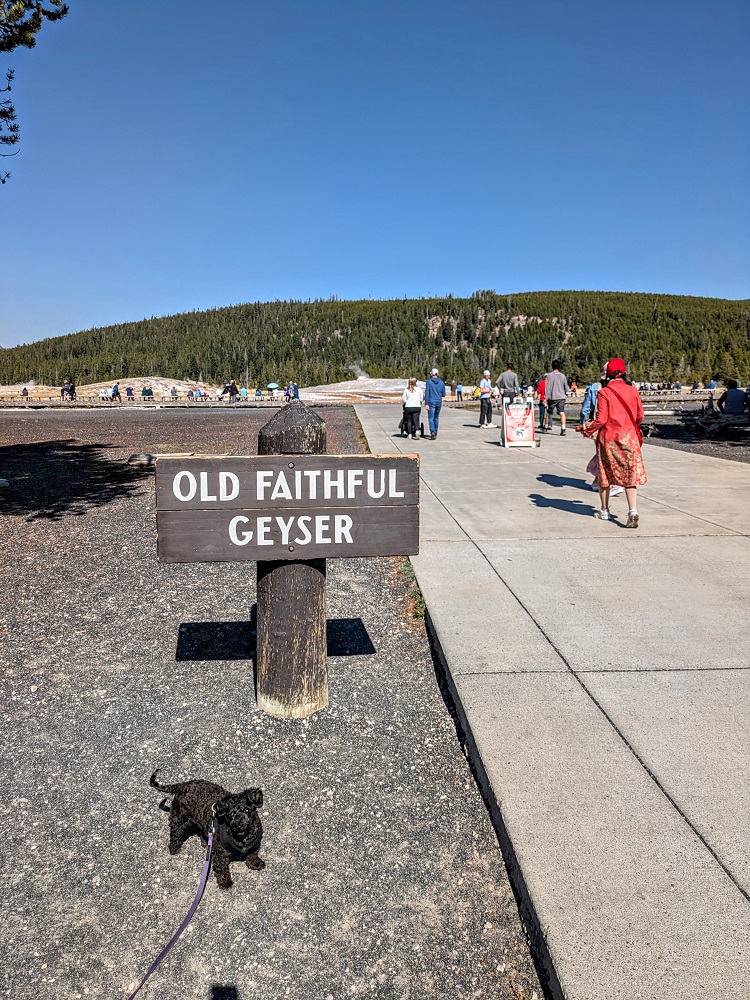
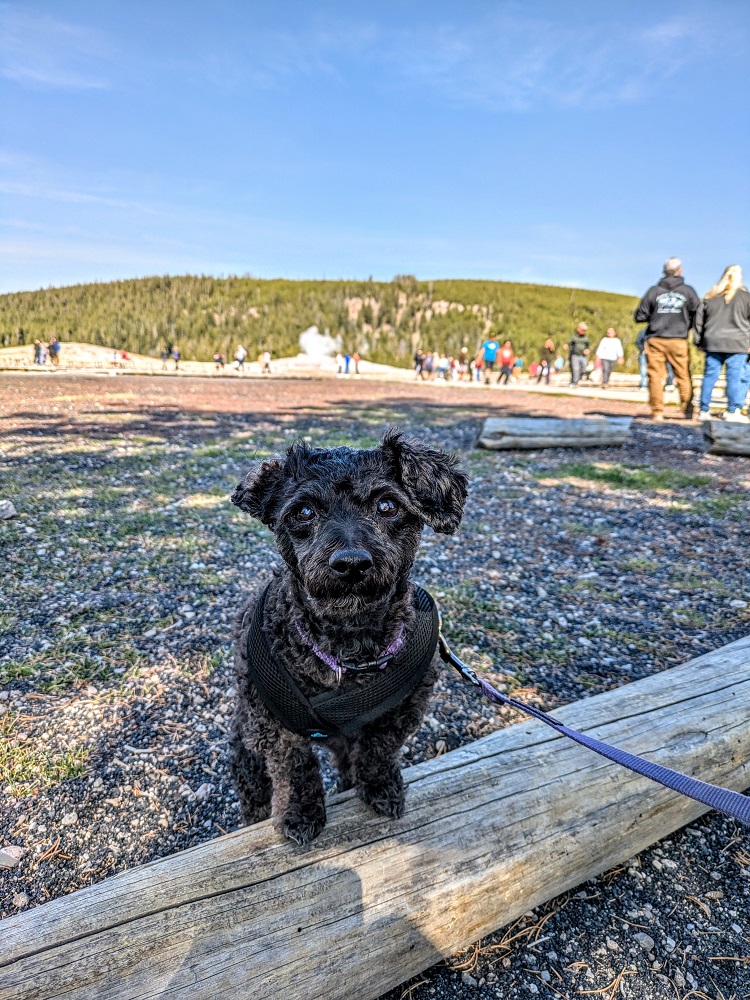
To make sure that Shae’s dad got the best view, the two of them made their way to the front and I stayed back in the pet-friendly area with Truffles. The wait for Old Faithful went on longer than expected. It was due to erupt at 2:33pm, although it could’ve been 10 minutes earlier or later.
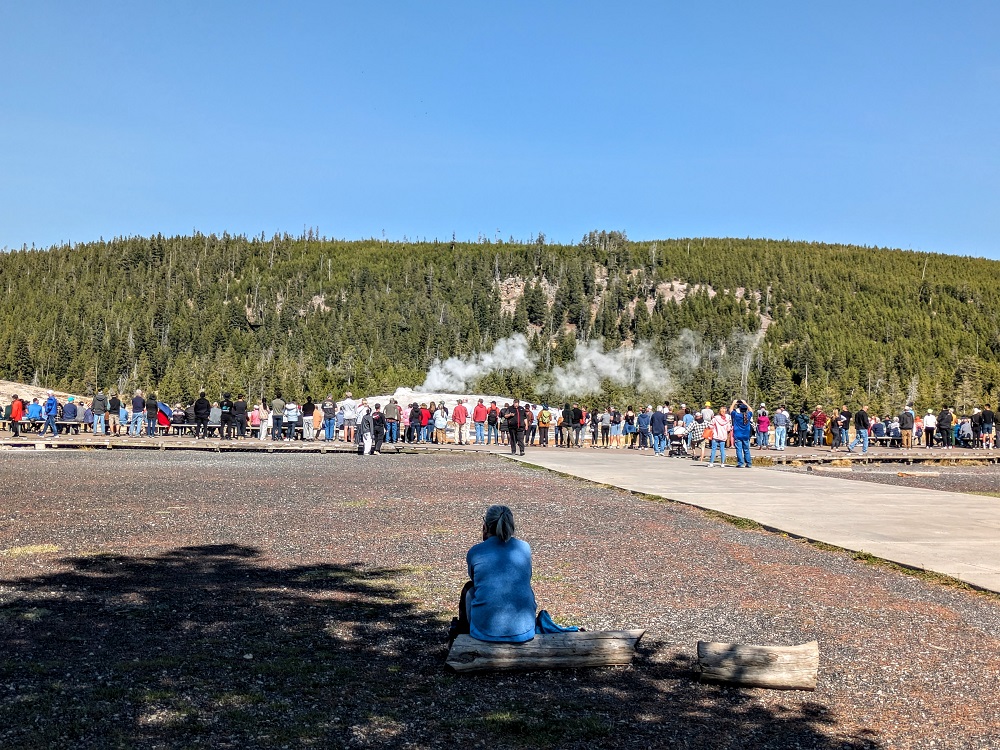
After a series of false starts, it started erupting properly at 2:41pm, 8 minutes later than expected. Despite being a little further back due to hanging out with Truffles, I don’t feel like I had an inferior experience as the view was still excellent.
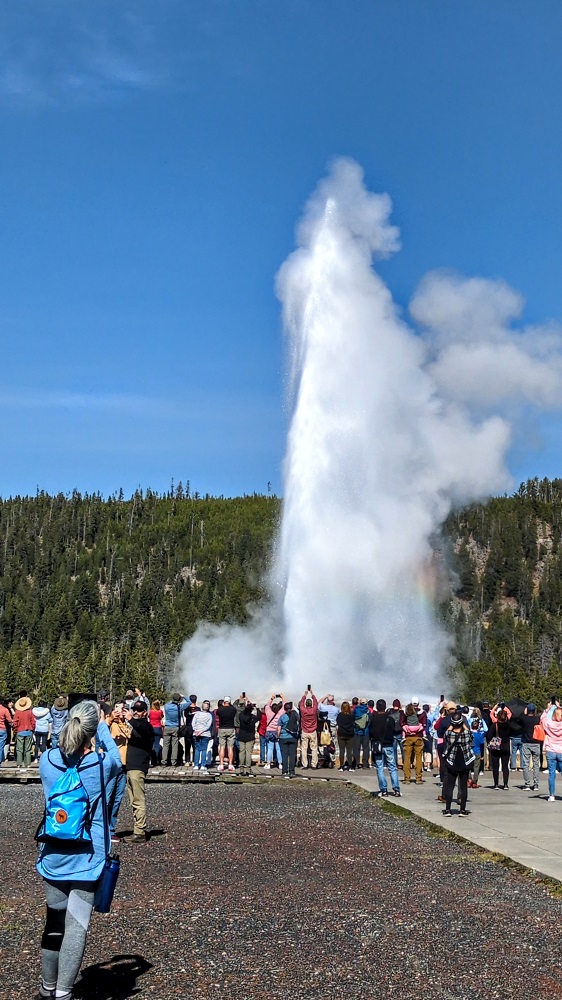
For what it’s worth, this is a screenshot from a video Shae took up close.
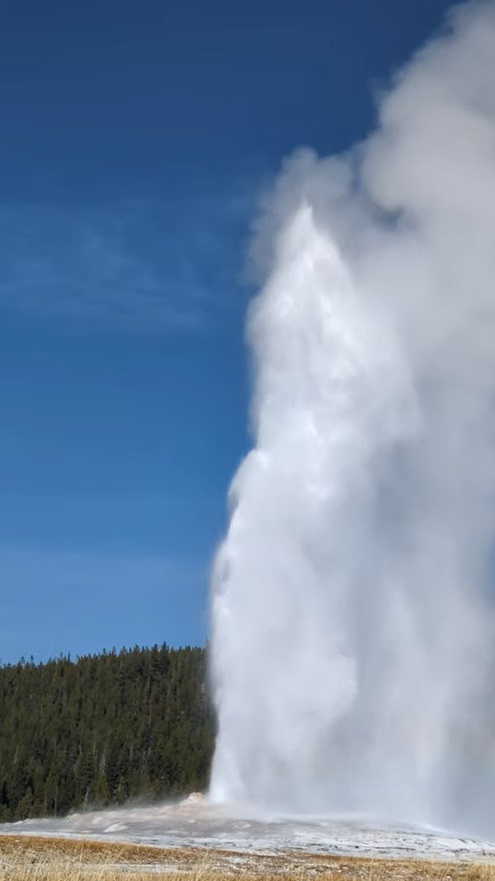
A historical manual for tourists has a fun fact about Old Faithful:
Old Faithful is sometimes degraded by being made a laundry. Garments placed in the crater during quiescence are ejected thoroughly washed when the eruption takes place. Gen. Sheridan’s men, in 1882, found that linen and cotton fabrics were uninjured, by the action of the water, but woolen clothes were torn to shreds.
After watching Old Faithful go off, Shae and I took it in turns to go inside to check out the exhibits in the visitor center as dogs aren’t allowed in there.
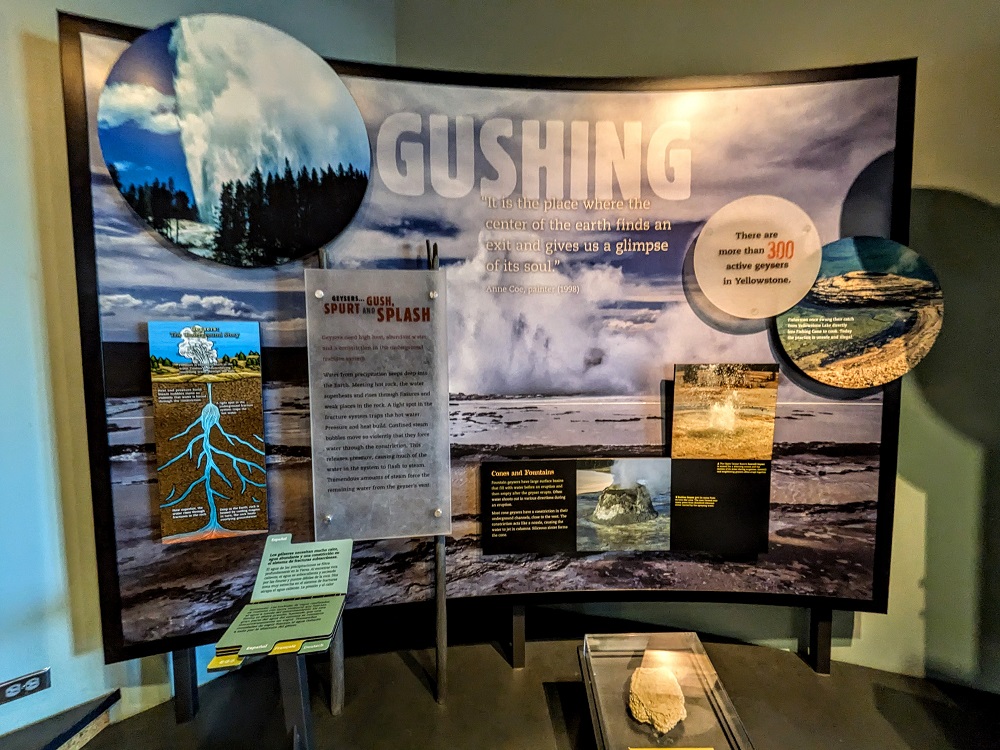
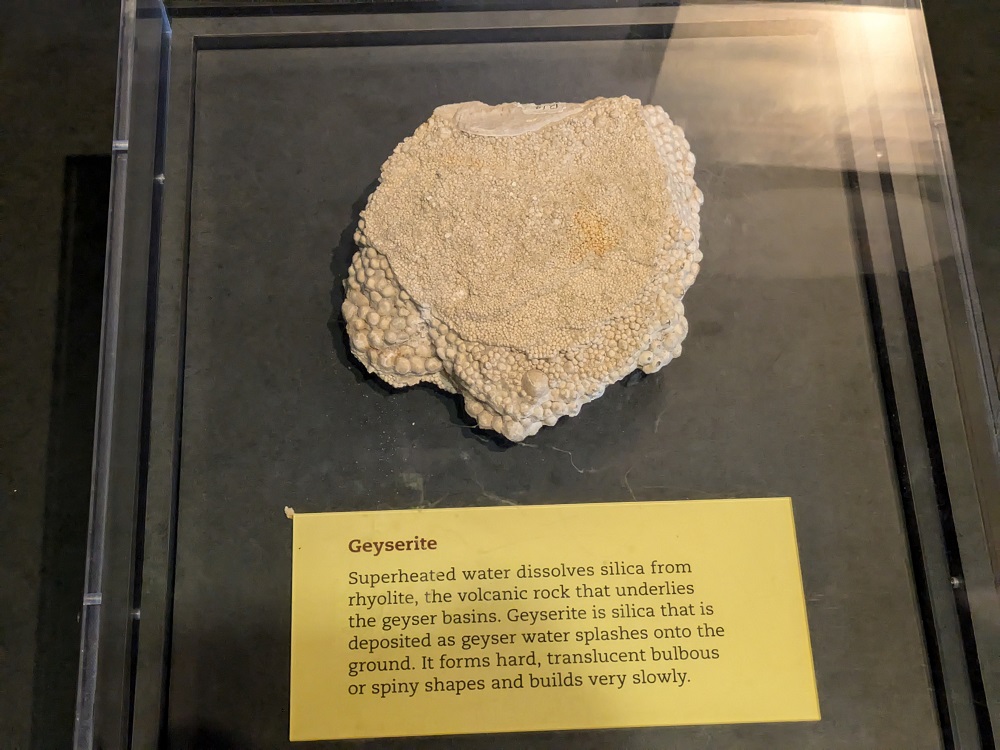
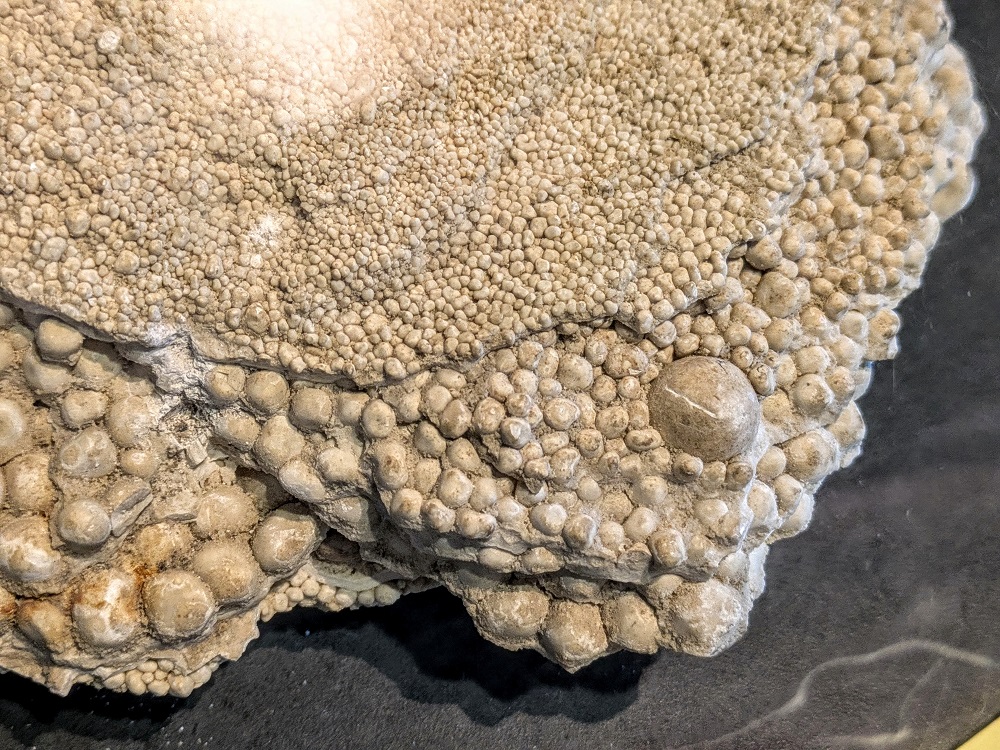
After finishing up there, we hopped back in the car and continued the drive through the park, stopping off at Black Sand Basin.

There was a boardwalk to explore alongside the hot springs.

Shae’s dad’s health wasn’t great at the time, so he paced himself by not getting out at every overlook and walkway. That meant Truffles had some company as she wasn’t allowed out on the boardwalks.
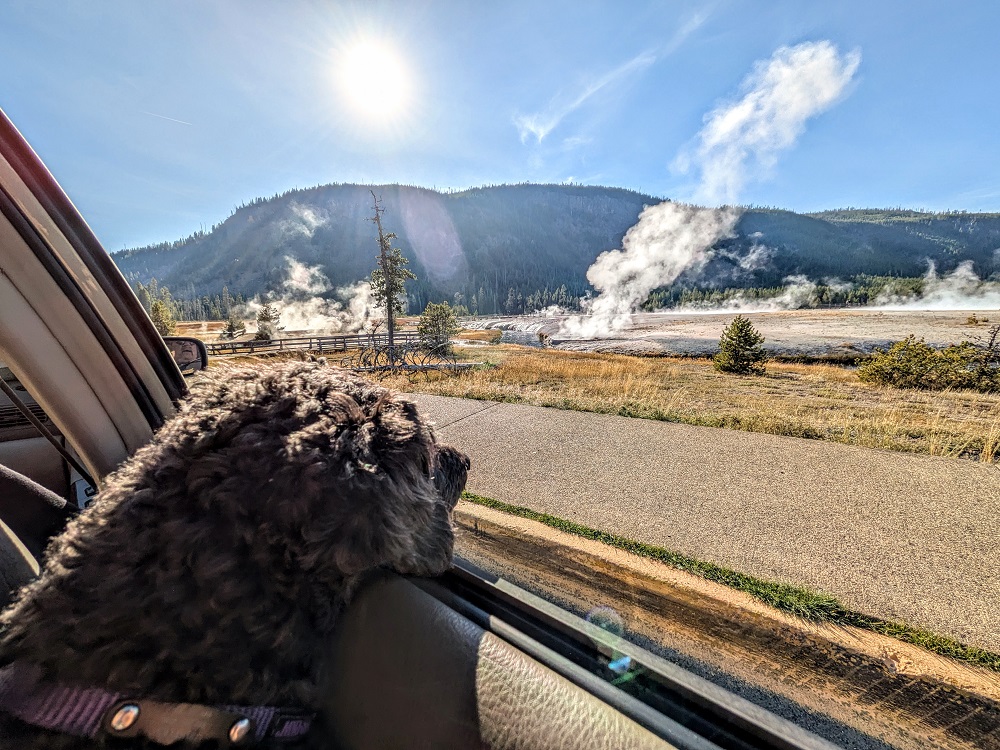
Next up was one of the other iconic water features in Yellowstone National Park – Grand Prismatic Spring.
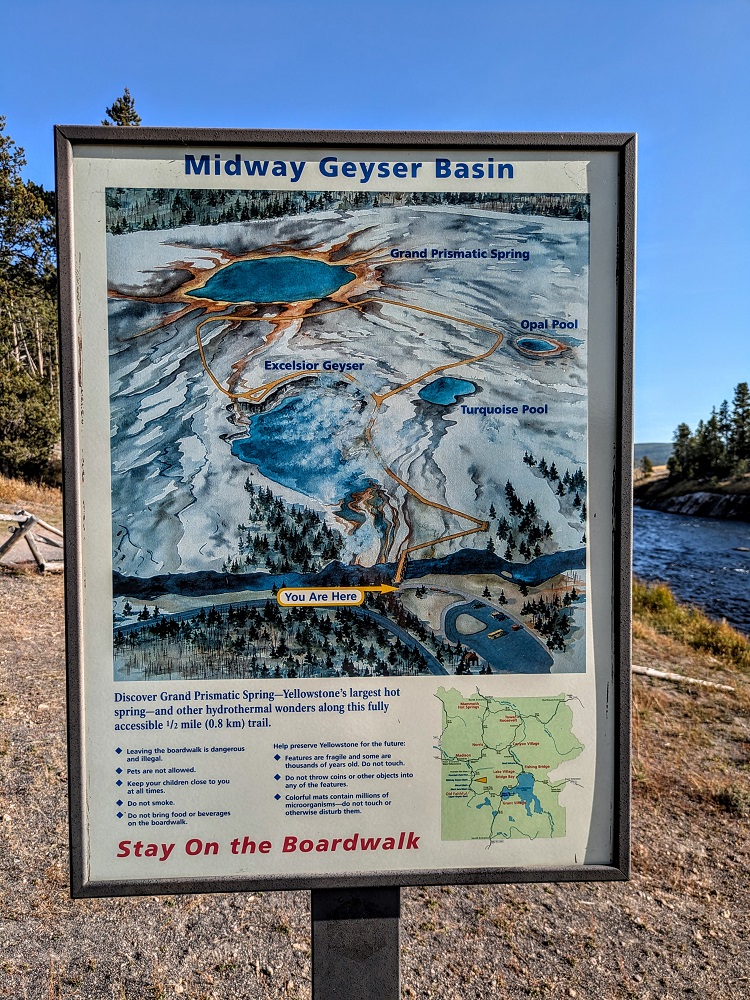
Grand Prismatic Spring is in the Midway Geyser Basin along with a couple of pools and the Excelsior Geyser.
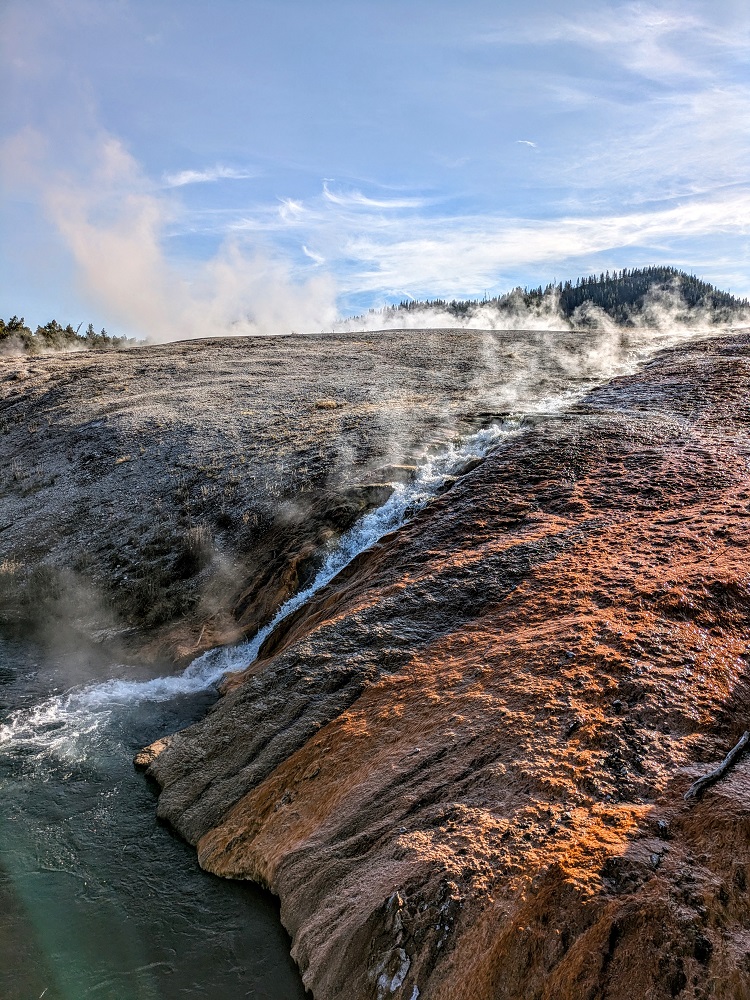
Excelsior Geyser has a fascinating history. From an information board there:
In the 1880s Excelsior Geyser erupted in bursts 50 to 300 feet high. The thermal violence formed the jagged crater and apparently ruptured the geyser’s underground system, causing eruptions to cease after 1890.
On September 14, 1985, Excelsior roared back to life with 47 hours of major eruptions. It is impossible to predict when this dormant but powerful geyser’s next eruption will occur.

The boardwalk continued up to Grand Prismatic Spring.
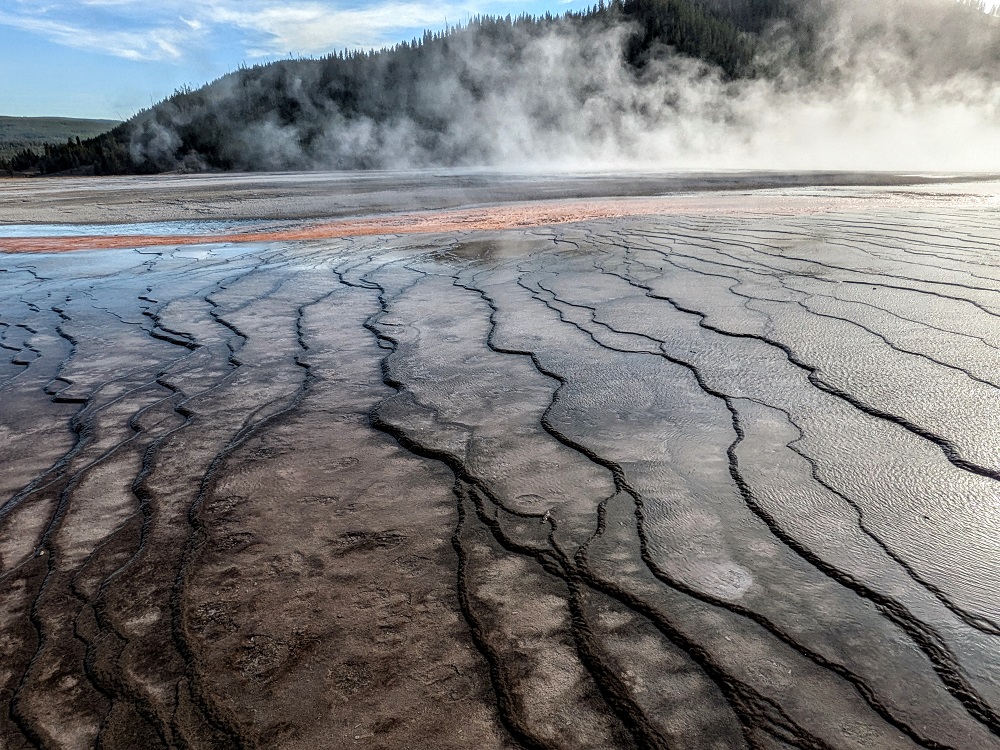
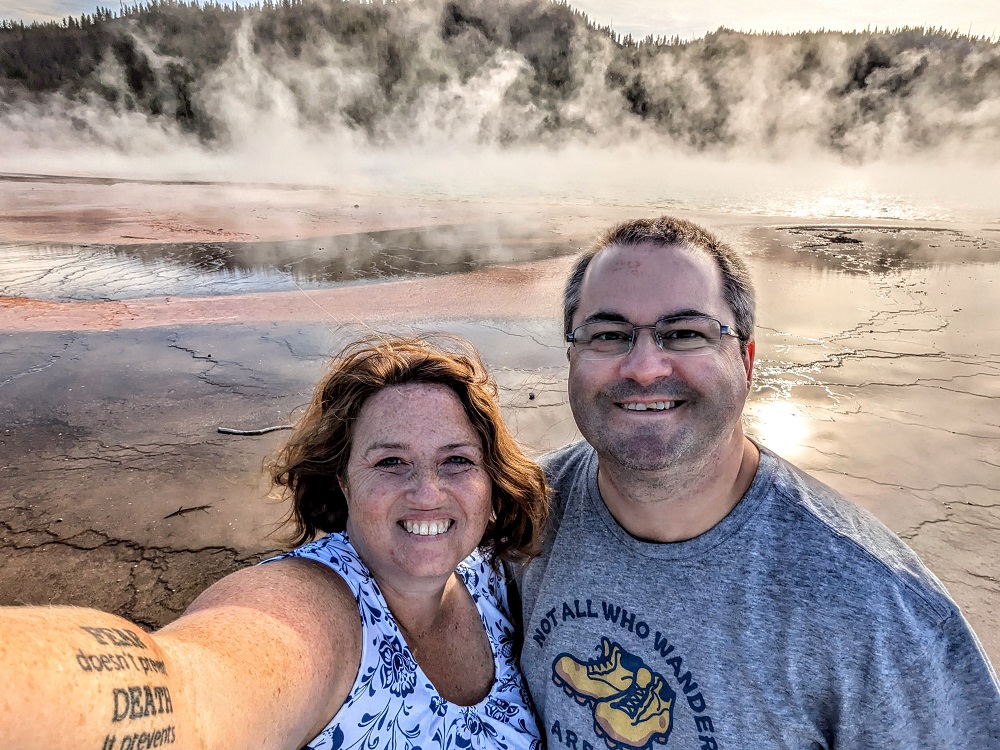
Unfortunately this turned out to be a little anticlimactic. You’ve probably seen overhead or elevated photos of the colorful attraction:
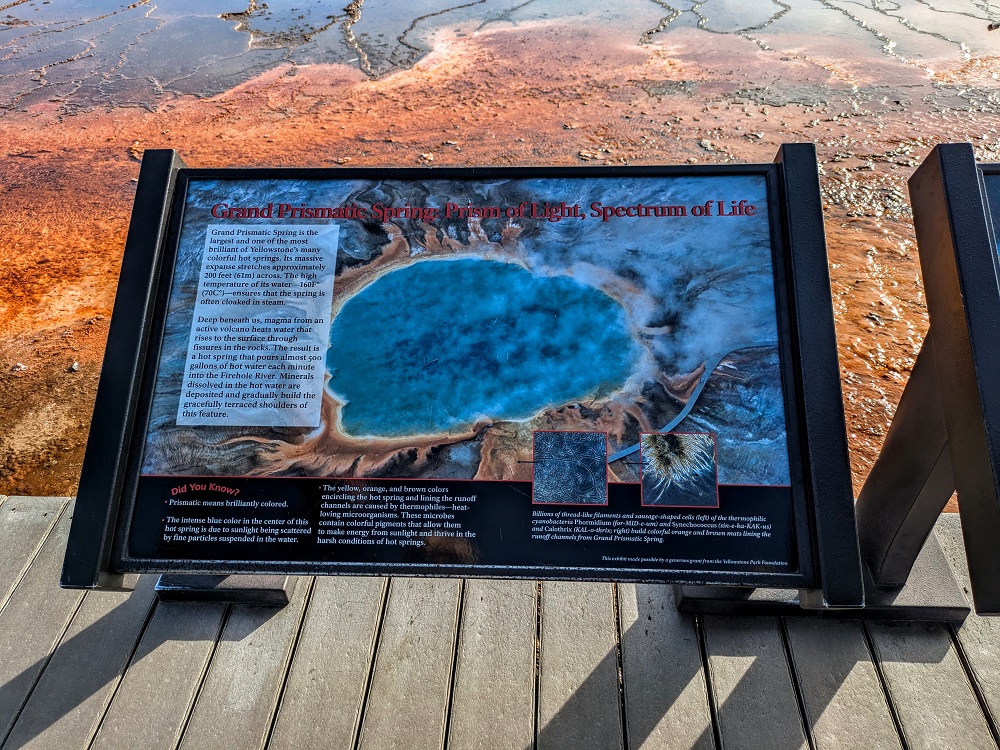
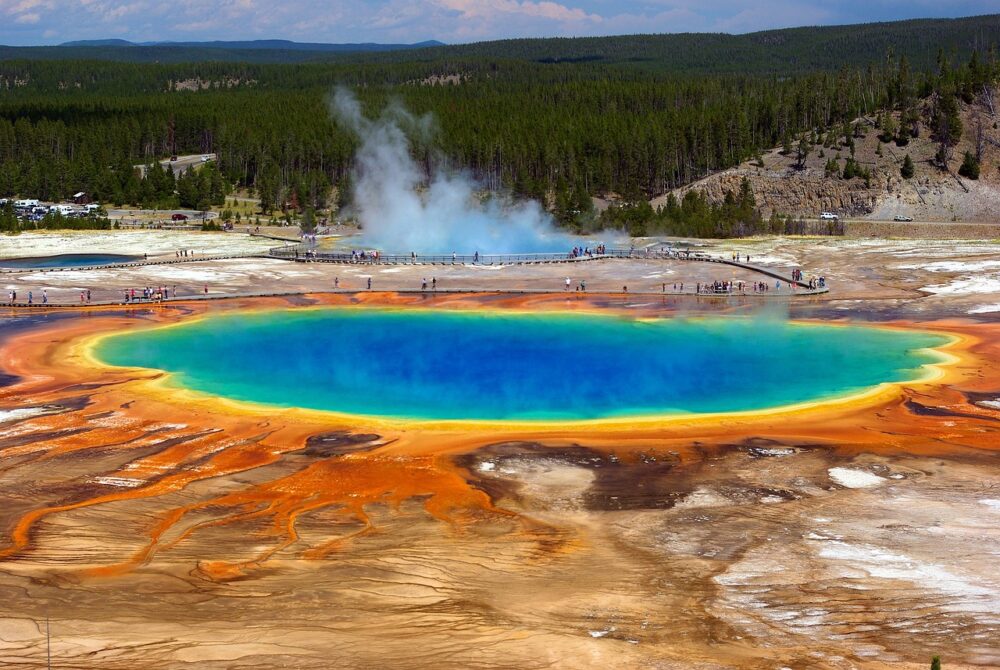
The reality of it though is different. Seeing as you’re at ground level, there’s a lot of steam covering it and the colors haven’t been enhanced by Photoshop, this is the view you get:
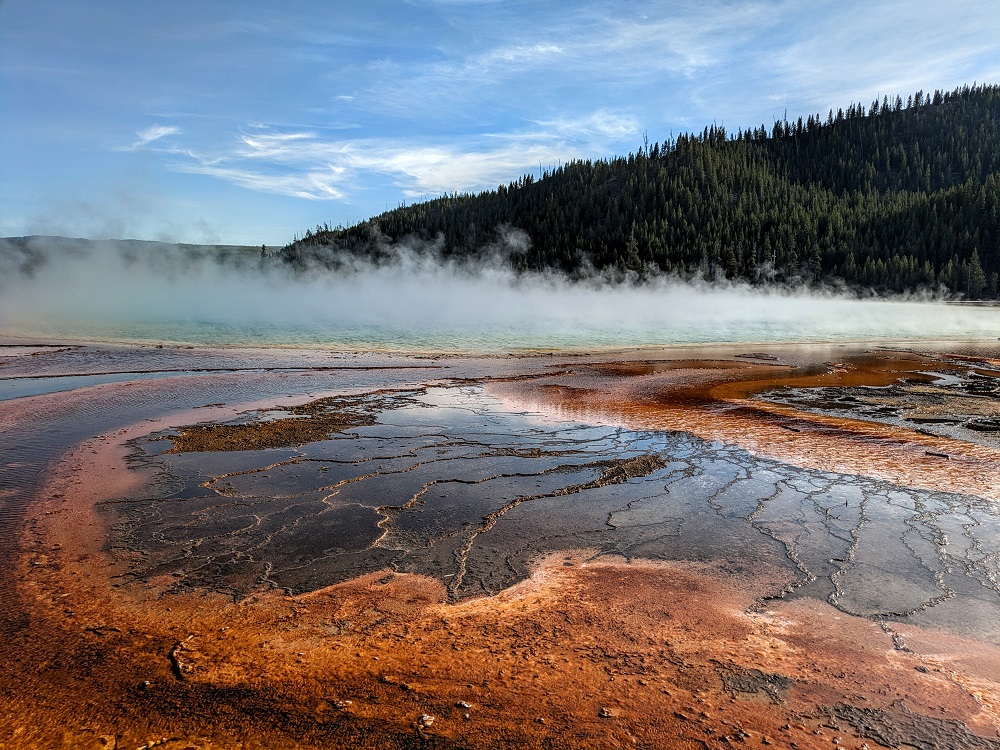
From there we continued driving through the park, spotting quite a few bison along the way.
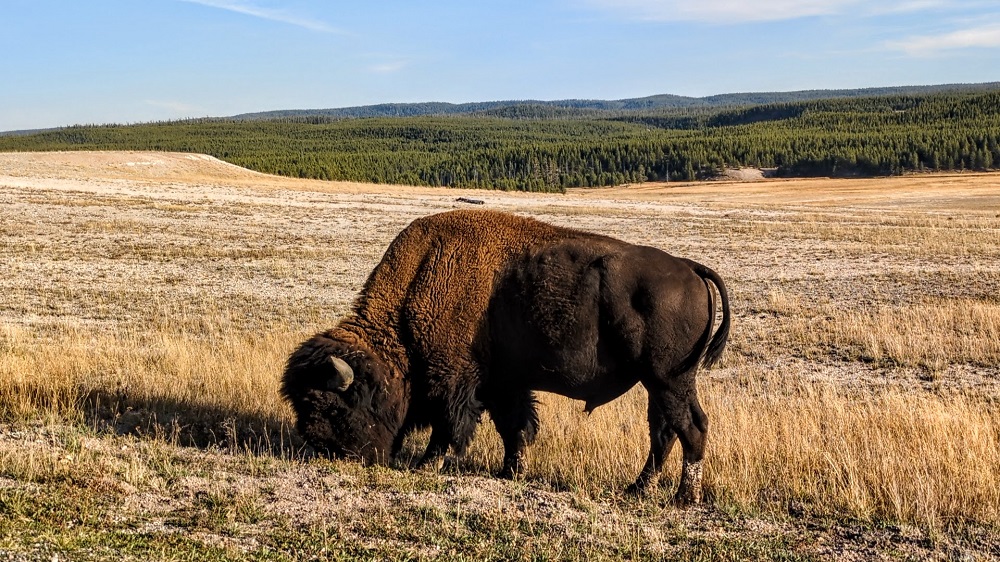
Our next destination was one of the other key sites in the National Park – Grand Canyon of the Yellowstone.


At one part of the canyon you can see Lower Falls from a distance.

There’s a trail that leads down to an overlook that’s much closer to the falls. However, it’s a very long way down which, more importantly, means it’s a very long way back up again! With the sun setting soon and a long drive back through areas with wildlife, we decided to get going rather than spending that much time hiking down and back up again.
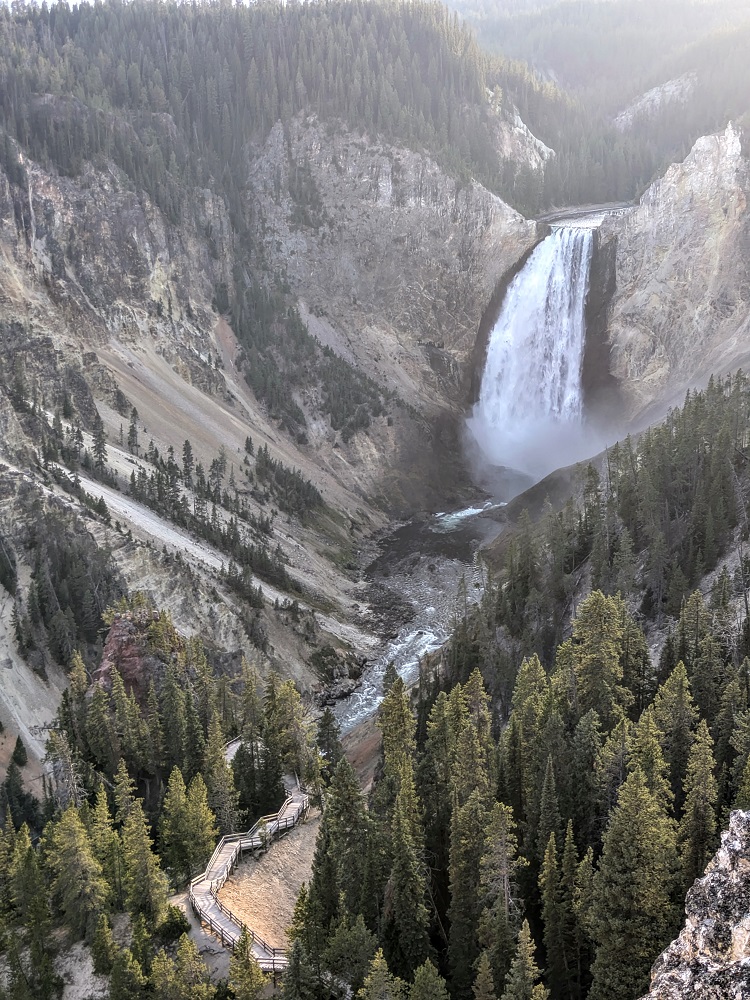
We did make one last stop at Yellowstone Lake on the drive back though as the sunset colors were looking pretty.
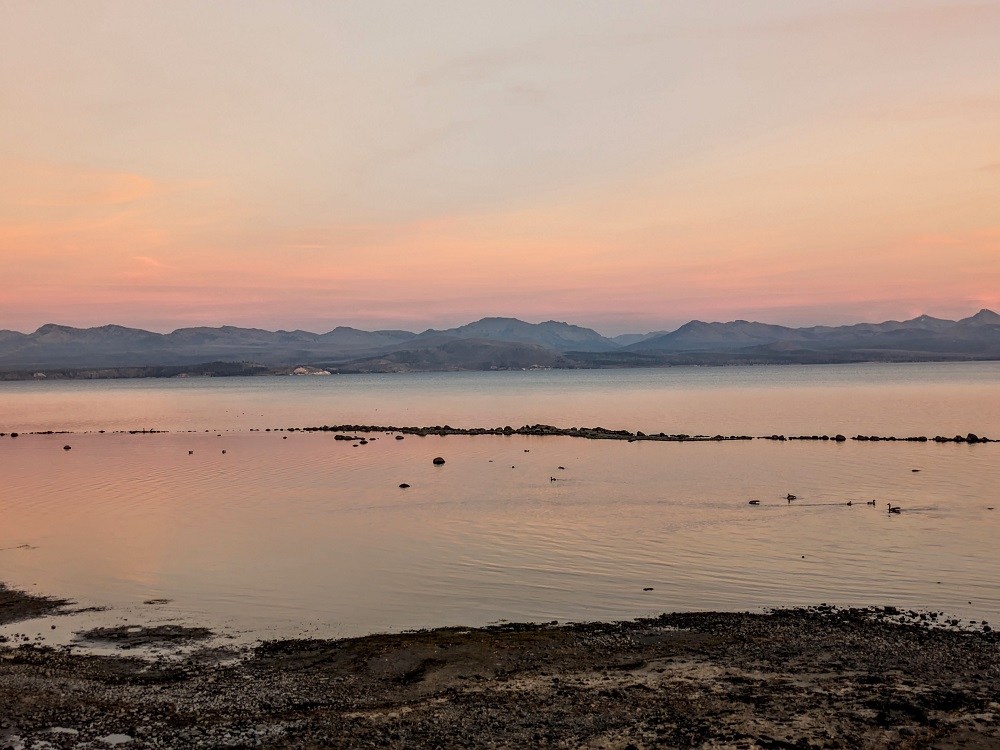
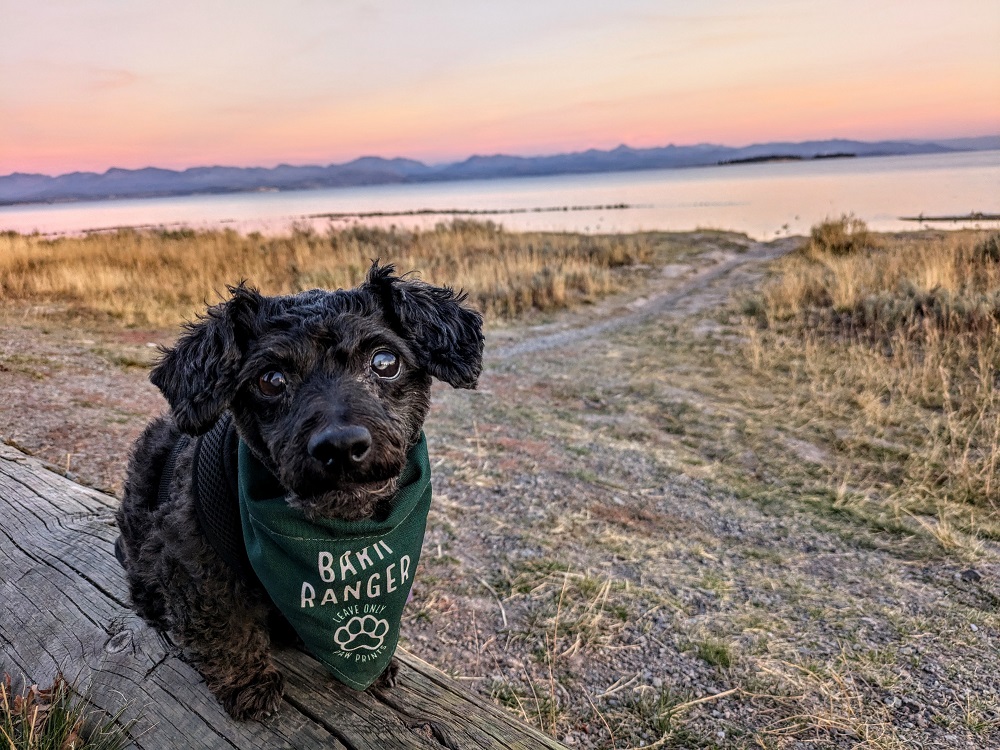
Bark Ranger – love it.
Yep, we love that that’s what the National Park Service refers to dogs as who visit.